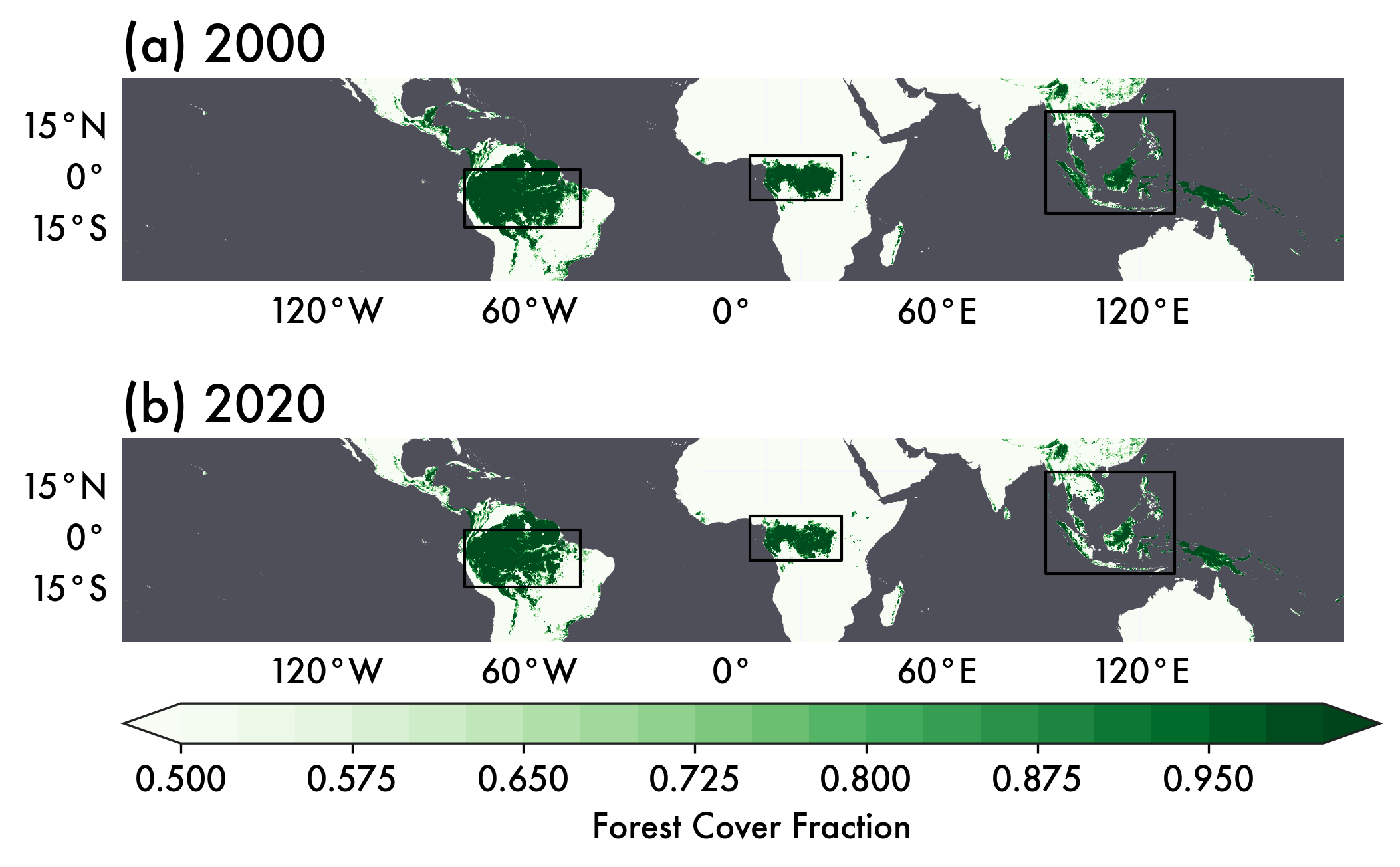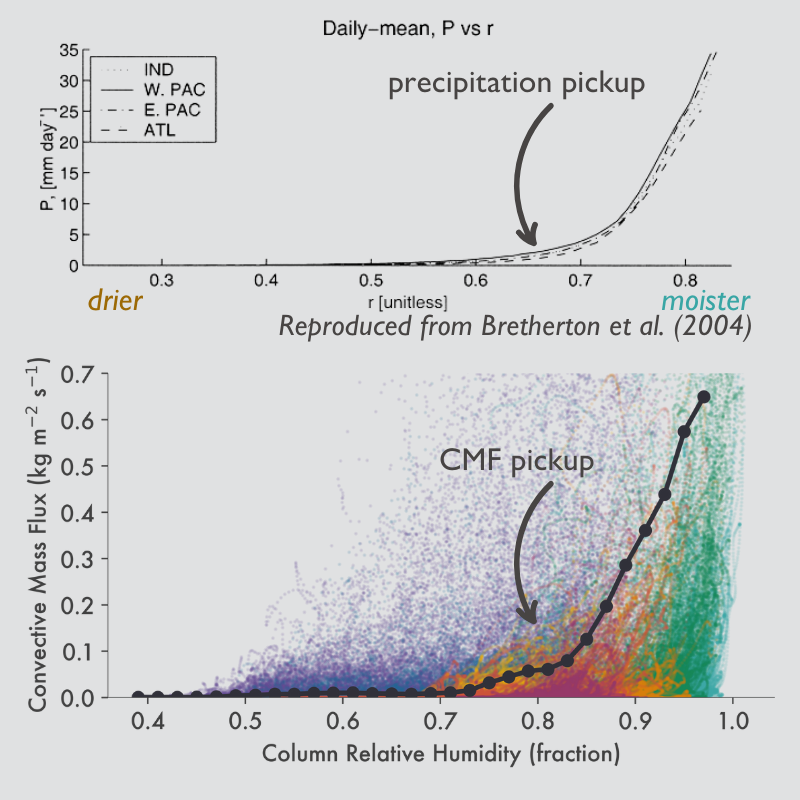projects

Deforestation Impacts on Clouds
Changes to the aerosol environment and to land cover often happen at the same time. In Borneo, for example, replacement of tropical rainforests with palm oil plantations often occurs alongside massive peatland fires. These changes are usually studied separately, but understanding their interactions is important to get an accurate picture of future changes to clouds and precipitation. In this GRL paper, we used two decades of satellite observations to estimate the impact of deforestation in Southeast Asia on clouds. One important point is that we find the impact of deforestation is not uniform everywhere––environmental humidity and aerosol loading can be important modulators of land-atmosphere interactions. Read more in this Eos feature! We're currently working on understanding how deforestation impacts vary across the diurnal cycle, particularly in terms of how the spatial pattern of deforestation impacts the mesoscale flow.

Resolving Convective Mass Flux Across Storm Types
As part of the NASA INCUS mission, we track millions of simulated clouds in a massive dataset from all over the tropics and subtropics to better understand controls on convective mass flux. Currently, we are looking at how atmospheric moisture impacts which storms drive the strongest vertical transport of air and how those relationships change across regions, storm morphology (e.g., organized versus isolated convection), and with the grid spacing used to simulate them. As our community moves towards global kilometer-scale models, these results give us a better idea of how well our current models are able to represent the strongest storms across the world.

Object-Based Approaches to Aerosol-Cloud Interactions
Not all clouds respond to changes in aerosol loadings in the same way. We study which clouds are most susceptible to aerosol-induced changes, by using new cloud identification and tracking tools to separate different cloud modes. We also investigate how aerosol-cloud interactions impact the convective transport of aerosols and which aerosols are removed from the atmosphere through rainout. In this paper, we showed that in more polluted environments, clouds are actually less able to regulate the aerosol loadings by rainout, so more aerosol is transported into the free troposphere.

Aerosol Breezes and Mesoscale Heterogeneity
In the real world, aerosol emissions can be localized on mesoscales (i.e., on the order of 100km) around urban areas, dust plumes, or large wildfires. The differing aerosol radiative effects between regions of high and low aerosol loading drives changes to the overall circulation. We've used idealized models and satellite case studies to study this phenomenon, which we call the "aerosol breeze". Read more about aerosol breezes in this paper, where we also discuss how important it is to represent mesoscale aerosol gradients in GCMs to accurately assess aerosol-cloud interactions.